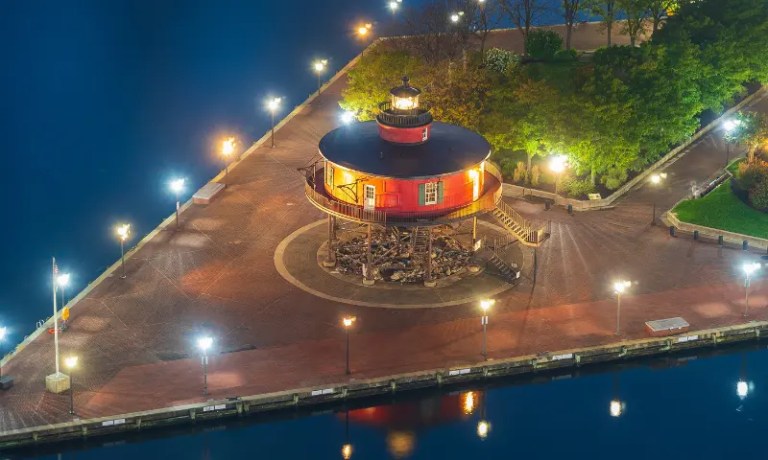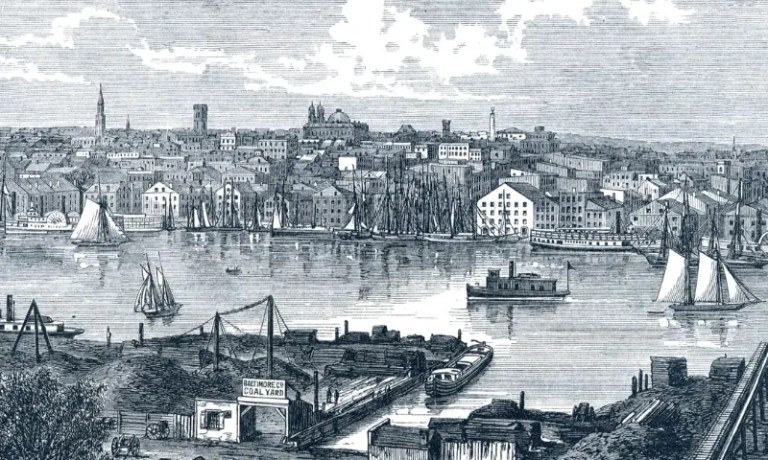The real cost of bottled water.
See how our bottleless water coolers compare.
Areas served
Offer a more sustainable solution for cleaner, better-tasting water on demand.
Fast, efficient, and reliable ice and water machines with advanced filtration.
Bottomless bubbles with built-in filtration for your modern workplace.
Better water makes better coffee. Give your people great-tasting coffee from best-in-class brewers.


Today, Baltimore drinking water comes from surface water from rainfall and snowmelt as its water source. This water, approximately 75 billion gallons at available capacity, is collected and stored in the City’s Liberty, Loch Raven, and Prettyboy reservoirs.
According to a recent report on Baltimore water quality, The Department of Public Works complies with EPA standards. However, open reservoirs and water sources, like in many of the country’s earliest cities, are susceptible to contamination, and residents complain of an earthy taste or musty odor in Baltimore tap water.
Also like many older cities, most of Baltimore’s water mains and water infrastructure are cast iron pipes, the industry standard until the mid-1960s. Older cast iron pipes are prone to clusters of corrosion and bacteria along the inside of the pipe. Sometimes these clusters break off and travel with your water to your faucet, resulting in water cloudiness, red water, and off-taste.
Baltimore was founded in 1729, nearly 50 years before the United States gained its independence. Already a thriving community along the Patapsco River, early settlers and natives sourced their Baltimore drinking water directly from local wells, streams, ponds, and springs.
As Baltimore grew, so too did its need for quality drinking water. In the early 1800s, The Baltimore Water Company set to work on the city’s water infrastructure. The company, which became municipal in 1854, organized its first distribution system and the first reservoir at the corner of Center and Calvert Streets, receiving water from Jones Falls.
The construction of the Lake Roland Dam and Reservoir and the development of mains and conduits further expanded the Jones Falls water supply. Recurring droughts during the 1870s and 1880s led to even larger expansion: The Water Department completed Lake Chapman (now Druid Lake) in 1865, a dam at Gunpowder Falls, as well as the Druid Hill and Loch Raven Reservoirs.
In the early 1900s, mounting public health concerns drove Baltimore to build a filtration plant at Lake Montebello. The plant began chlorinating, which vastly improved Baltimore water quality. However, the original indoor filters, which remain in use, are beginning to show their age.
See how our bottleless water coolers compare.
Talk to a Baltimore Culligan Quench water expert to find the best water solution for your space.
Backed by 85 years of Culligan expertise, Culligan Quench has focused exclusively on providing businesses with the highest quality filtered water. This commitment to doing one thing well has made us the trusted water authority for over 75% of the Fortune 500. We offer the best bottleless water coolers, ice machines, sparkling water dispensers, and coffee brewers to fit any workplace. No matter your location, company size, or industry, we have a filtered water solution that is right for you
Play videoProudly providing businesses with clean, filtered drinking water in the greater Baltimore Metro Area.
| Mon: | 8 AM – 8PM |
| Tues: | 8 AM – 8PM |
| Wed: | 8 AM – 8PM |
| Thur: | 8 AM – 8PM |
| Fri: | 8 AM – 8PM |
| Sat: | Closed |
| Sun: | Closed |
Baltimore tap water is treated to meet federal and state standards and is safe to drink. Before it’s distributed to residents, the local water supply undergoes disinfection, filtration and other treatment. Baltimore’s Department of Public Works (DPW) also adjusts the pH to ensure it’s safe for consumption. Local water is tested for contaminants at least 360 times each month to ensure it meets regulations.
While your employees can safely drink Baltimore water, Culligan Quench water coolers offer advanced filtration systems for cleaner water options.
Baltimore’s water is classified as hard because of its high concentration of calcium and magnesium. While hard water is safe to drink, the mineral content can leave residue on glassware and limescale buildup in faucets, pipes and appliances.
The Occupational Health and Safety Administration requires businesses to provide staff with water meant only for drinking. Bottleless water coolers are a sustainable option, offering employees filtered local water whenever they want a refreshing drink.
Baltimore’s main water sources are the North Branch of the Patapsco River, Gunpowder Falls and Susquehanna River, which provide water for the residents in the Baltimore metropolitan area.
Raw water is collected and stored at the Liberty, Loch Raven and Prettyboy reservoirs. After processing at three treatment plants, the water is pumped into the distribution system and delivered to businesses.
You can connect your company’s water supply to a point-of-use filtration system to provide employees and clients with great-tasting water. Choose from countertop and freestanding water dispensers and ice machines.
Over 120,000 companies, big and small, trust Culligan Quench for cleaner, safer, and great-tasting water.
"Water is great
"Culligan Quench is one of the easiest, quickest, smartest
Ready to upgrade
your water?Get matched with the best water, ice, sparkling water or coffee machine for your workplace.
Take our quiz